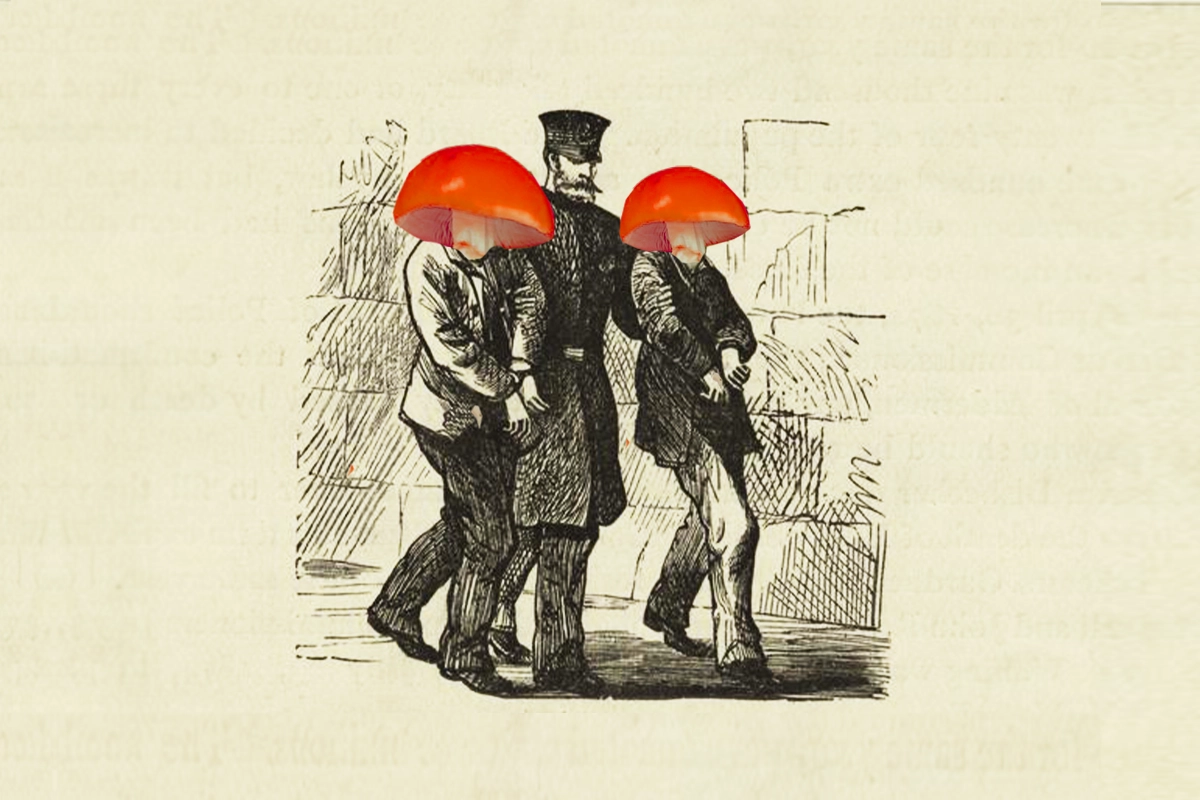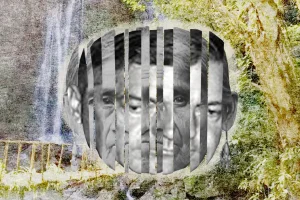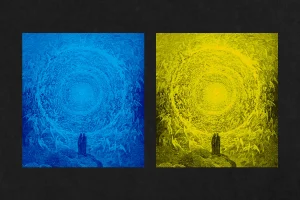Everyone is doing mushrooms. From microdose gummies to chocolates to drinks and cookies, psilocybin mushrooms are the most accessible they’ve ever been. Now, there’s data illuminating the consequences of this wide availability.
In 2022 alone, law enforcement agencies around the US seized 1,861 pounds, of psilocybin-containing mushrooms. That’s an increase of 273 percent from 2017, according to a study by the National Institute on Drug Abuse (NIDA), the New York Times reports.
The reason for the uptick, researchers say, is due to the overwhelming shift in attitudes around psychedelics, specifically mushrooms. The report points to recent legalization initiatives in Oregon and Colorado—and their respective political campaigns around mental health—as a catalyst for this change in perception.
READ: Psilocybin Mushrooms Have Been Growing on Earth Since Dinosaurs Went Extinct
Realistically, however, attitudes started shifting before either state legalized psychedelic therapy. We can look to studies as early as 2016 by institutional giants such as Johns Hopkins and Imperial College London that began shifting the narrative about these highly demonized drugs.
And, while the subsequent municipal deprioritization movement of 2019 is a direct effect of the clinical trials (and media hype), it’s important to note this research is pulling data from law enforcement agencies around the US. We know cops inflate the street values and weight of seized drugs. In fact, there’s legal precedent for law enforcement to factor in the weight of drug packaging or an object a drug is carried on, such as a sheet of tabs soaked in LSD. They don’t just count the LSD itself, they also consider the weight of the paper.
“The [seizure] trends are likely to continue,” the study’s authors wrote in the journal Drug and Alcohol Dependence, “as it has been projected that most states will have passed [psychedelic] legalization measures between 2034–2037.”
How to Grow Shrooms Bundle
Take Both of Our Courses and Save $90!
“Research has found that media coverage of the medical benefits of the use of drugs, like ketamine and MDMA, appear to be linked to increased willingness of some people to use [them] nonmedically,” the study’s authors write, “which may also be applicable in the case of psychedelics such as ‘shrooms.”
Let’s be real, though: If we weren’t amidst a severe mental health crisis, the public appetite for psychedelics might not be as voracious as it’s been. And while the study’s authors spend less time on that issue in their report, one thing is certain: The numbers unequivocally show that demand for mushrooms has greatly increased since 2017.
According to the data, most mushroom seizures occurred in the Midwest at 36.0 percent, and the second-highest in the West at 33.5 percent. In terms of total weight of seizures, the West had the highest with 4,109 pounds seized. The South followed with 4,039 pounds seized. And while there’s a notable increase in the total weight of seized psilocybin mushrooms between 2017 and 2022, researchers observed that the most weight seized peaked in 2021 with 3,400 pounds taken.
“We are in the middle of a rapidly evolving cultural, media, and legal landscape when it comes to psychedelics, and we need data to help shape informed and appropriate public health strategies,” said NIDA Director Nora D. Volkow, MD. “Moving forward, we must continue to track data on the availability of psychedelics, patterns in use, and associated health effects to guide efforts in promoting accurate education and reducing potential harms among people who do plan to use psychedelic drugs.”
Although seizures do not necessarily reflect the prevalence of use, law enforcement says they are ultimately an indicator of the availability of these substances. However, our interpretation is that increased availability also suggests a higher demand, and thus leads to a higher rate of use. But, hey, what do we know?
“[While the] increased popularity of microdosing psychedelics may be contributing to increasing prevalence of use,” the study’s authors write, “another factor driving recent increases in use of shrooms may involve increasing availability.”
In a separate but related story, the University of Virginia Today reported that there’s been an increase in calls to US poison centers by adolescents and young adults who’ve taken psilocybin mushrooms. Researchers at the University of Virginia (UVA) School of Medicine discovered a significant increase in psilocybin-related calls among teenagers aged 13-19, with the number rising from 152 in 2018 to 464 in 2022. In the same period, calls from adults aged 20-25 more than doubled, going from 125 to 294. This data, obtained from the National Poison Data System, shows a big spike in psilocybin-related calls from individuals aged 13-25 between 2013 and 2018, before decriminalization efforts were initiated.
READ: Why All Drugs Should be Legal
And while Virginia maintains its hardline, prohibitionist stance on all psychedelic substances, UVA researchers blame the decriminalization of psychedelics for the uptick in poison control calls regarding psilocybin mushrooms.
The national mushroom market can only be described as the Wild West right now. You can purchase mushroom products (or products labeled as containing a “mushroom blend” or “trippy blend”) in unregulated dispensaries, liquor stores, bodegas, gas stations, and smoke shops around the US. Medical professionals say they worry that the hype surrounding psychedelics has moved faster than the science.
“Psychedelic drugs have been promoted as a potential cure for many health conditions without adequate research to support these claims,” Dr. Volkow said in a NIDA news release. “There are people who are very desperate for mental health care, and there are businesses that are very eager to make money by marketing substances as treatments or cures.”
The study also says that a greater risk for harm occurs when people consume psychedelics outside of a therapy setting, which is how most people consume them. It cites “bad trips” and “difficult experiences” as the risks of taking psychedelics “recreationally” and can trigger mental health issues.
Of course, keep in mind that NIDA is the government’s drug research arm. Meaning, the scope from which they analyze psychedelics—and all drugs—is through the lens of abuse. Dr. Carl Hart says in his book Drug Use for Grown-Ups that NIDA (the organization he used to conduct research for) pathologizes drug use purposely because its goal is to further the interests of the government’s “agenda,” which is to uphold the Drug War. So, while the UVA cites a spike in poison control calls, the numbers are still relatively small compared to how many people are likely consuming mushrooms around the US.
That said, exercising caution and care when consuming mushrooms or any psychedelic is harm reduction everyone should practice. Knowing that cops are seizing more mushrooms than ever before around the US is harm reduction, too.

DoubleBlind is a trusted resource for news, evidence-based education, and reporting on psychedelics. We work with leading medical professionals, scientific researchers, journalists, mycologists, indigenous stewards, and cultural pioneers. Read about our editorial policy and fact-checking process here.

DoubleBlind Magazine does not encourage or condone any illegal activities, including but not limited to the use of illegal substances. We do not provide mental health, clinical, or medical services. We are not a substitute for medical, psychological, or psychiatric diagnosis, treatment, or advice. If you are in a crisis or if you or any other person may be in danger or experiencing a mental health emergency, immediately call 911 or your local emergency resources. If you are considering suicide, please call 988 to connect with the National Suicide Prevention Lifeline.



